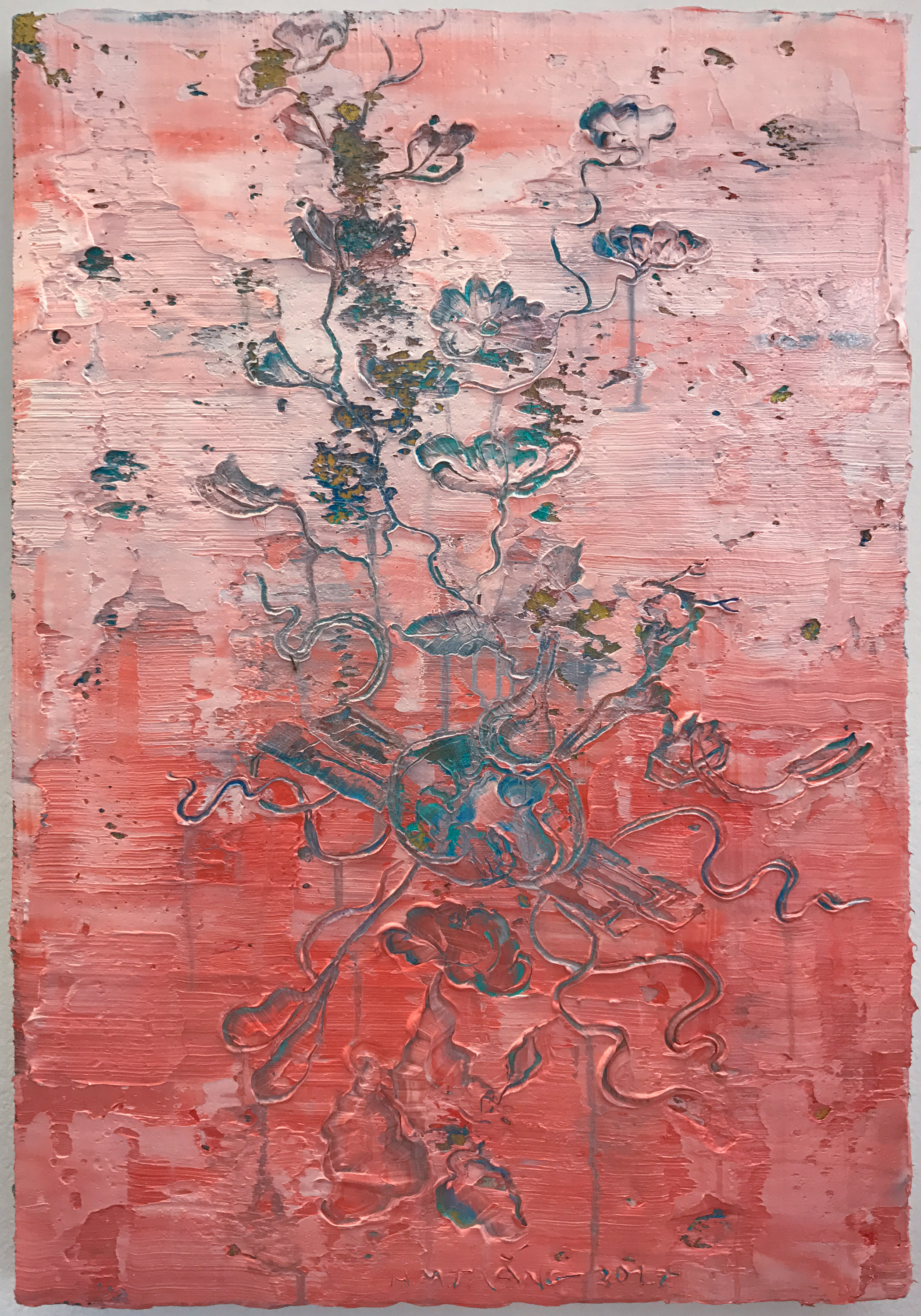Ha Manh Thang
Ha Manh Thang’s work draws reference from a range of socio-political materials and cultural references. His earlier work explores issues following Doi-Moi, the economic opening of Vietnam and the consequential rise of consumerism and materialism. Ha’s work consistently balances powerful imagery with satirical critical commentary, at times bold and subtle at others.
In recent years, Ha’s work has an overarching theme covering the “Landscapes of Vietnam”, of which the latest series “The Lake” is part of. This body of work continues the exploration on the attributed meaning to and idealization of traditional buildings set within a specific environment as dictated by the laws of Fung-Shui. Traditional buildings of cultural significance such as temples or communal houses are finely etched onto impasto bases, they seem invisible at first sight but are, upon closer inspection, clearly and sharply defined. Acting as understated reminders, their vanishing optical illusion points to the disappearance of culture and tradition in a rapidly modernizing society.
Ha states “I try to isolate my objects from space, time and other identifying characteristics”.
Considered one of the leading young figures in contemporary art in Vietnam, he was featured in the major international publication Phaidon “Painting Today” (2009), the only artist from Vietnam profiled alongside acclaimed artists such as Gerhard Richter, Jumaldi Alfi and Zhang Xiaogang.
Ha Manh Thang was born in Thai Nguyen Province, Vietnam in 1980. He graduated from the Fine Arts University in Hanoi, where he currently lives and works. Ha has exhibited widely regionally and internationally, notably at the Singapore Art Museum (2008), ifa Galleries, Berlin and Stuttgart (2009), Reök Palace, Budapest, Hungary (2011) and at the First South Biennale, Fine Arts Museum, Caracas, Venezuela (2015). He has held solo shows in Vietnam (2005), Singapore (Ernst & Young Asean Outreach, 2008), Bangkok (2014) and Taipei (2016).
His works are in the Permanent Collection of the Singapore Art Museum, The Royal Melbourne Institute of Technology (RMIT) Collection, the Zoltán Bodnár collection (Budapest) and Collection Born (Germany).

